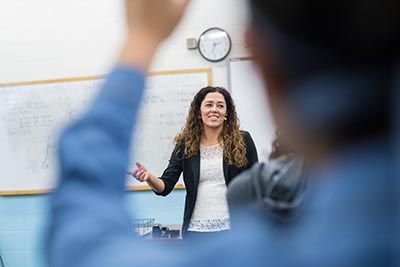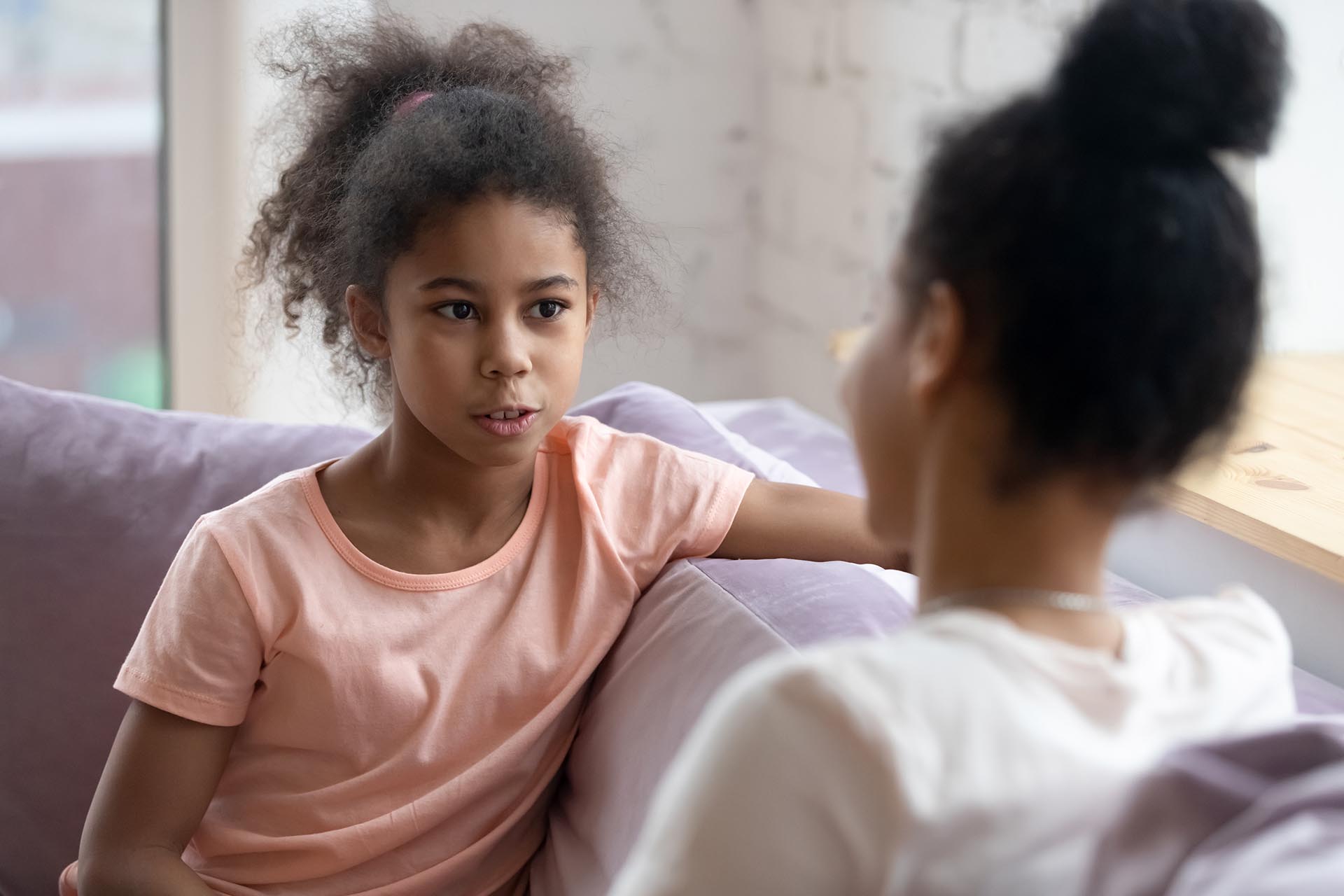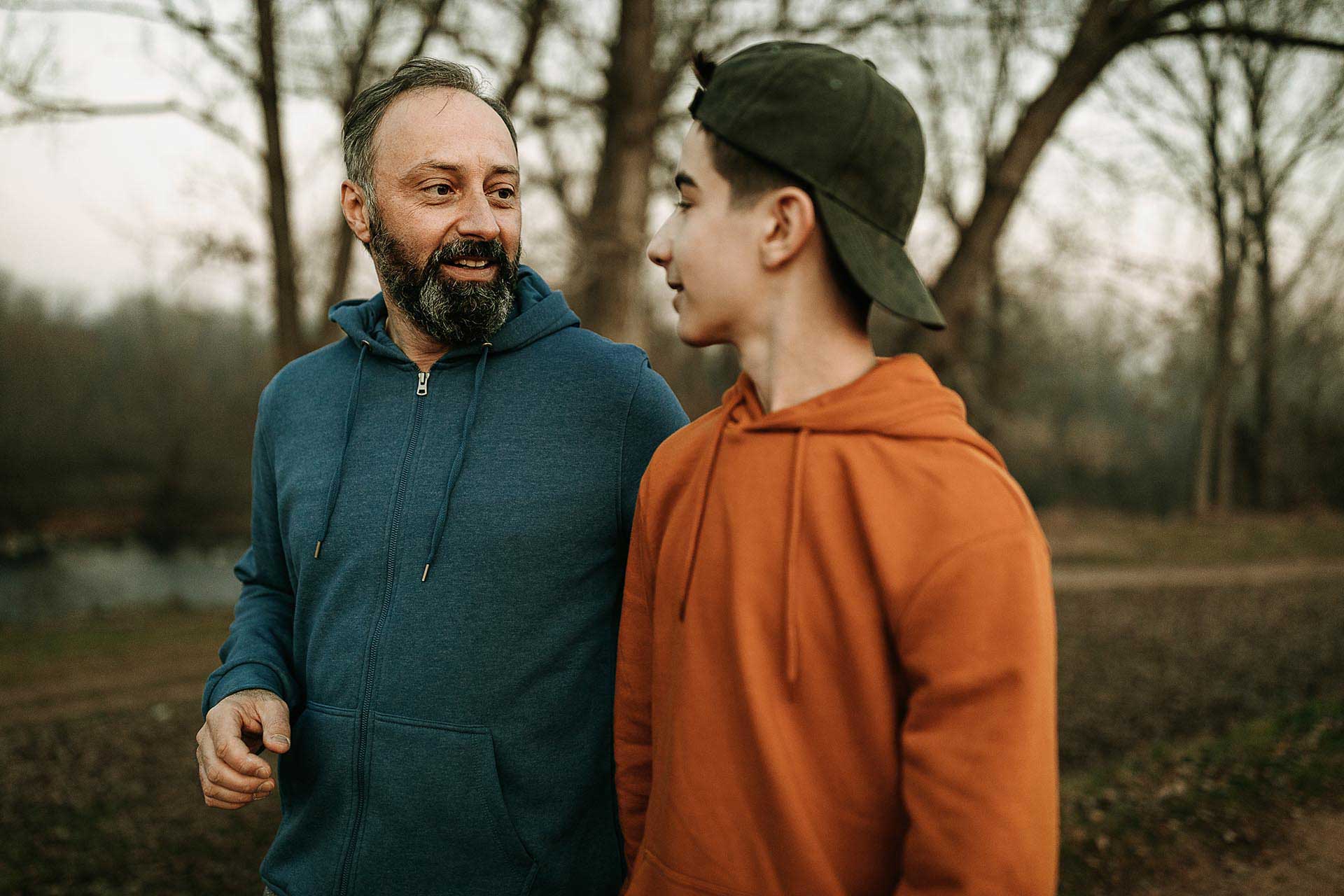My five year old asked me yesterday where babies come from. We haven’t talked about sex before, and I’m worried about what to say or how.
It’s normal for parents and caregivers to be anxious about having conversations about sex, reproduction, puberty and the like with their children. This is especially true of young kids, as we don’t want to say too much too soon. But kids are definitely ready to know about pregnancy and reproduction by age five especially if they are asking questions. Plus, children generally only take on the information they’re ready for and filter out the rest, so if you slip up and say something you don’t think you should have – don’t worry.
Don’t be too hard on yourself
First and foremost, take the pressure yourself! You’re not going to get it right all the time, and that’s okay. You also don’t need to be an expert or know every single detail. This is why these sorts of conversations should never just be one big talk. Try to keep a calm and neutral tone; it sends a message that talking about this isn’t a big deal. By making time to chat about sex, reproduction and so on a semi-regular basis (of course, you have to follow what suits your parenting style and what you feel right about here), we send the message to our children that talking about these topics isn’t taboo, and that they can come to us with their questions.
Getting started
So, how do you get the conversation rolling? Our advice is to start by asking them what they already know. Ask them what they’ve heard. Confirm anything that’s right and correct anything they’ve got wrong. They might have some ‘out-there’ misinformation, or even details about something that you think is way too old for them, but it’s important not to laugh at anything they say or even get angry. Sometimes we can think they’re trying to ‘get a rise’ with what they say, when really, it’s a sincere question or something they’ve heard that’s confused them, so be wary of allowing your discomfort to get in the way. When we feel uncomfortable, we can be sensitive and may react negatively or even find excuses to avoid a conversation. Thinking a child is being ‘silly’ for asking a question (when they’re not, and really just want to know the answer) is an example of this. Once you’ve asked them what they know, before you get into the actual mechanics, it’s a good idea to go over the proper names for all the basic reproductive body parts (breasts, vulva, vagina, uterus, ovaries, penis, testicles).
How to explain how babies are made
Start using the language your child is familiar with and then you can build knowledge and vocabulary along the way. You are in control of how much you say, so what we have below you can cover all of, or pick the bits you want to begin with. A simple start might be: all babies are made from two tiny cells, a sperm cell from a man and an egg cell from a woman. (Some parents of young children might prefer to use the word ‘seed’ for ‘sperm cell’ – that’s fine, but they’ll need to know the proper word later.) A baby is made when the sperm and the egg meet and join together. Depending on the age and interest of the child you can stop there and see if they have any questions. Books are a great way to introduce the topic and we’ve listed a few to start with at the end of this article.
If they’re ready for more information you can go on and explain: most women are born with eggs in a part of their bodies called ovaries and most men make sperm in a part of their bodies called testicles. The egg travels from the ovaries and begins to make its way to the woman’s uterus – which is where a baby can grow. When two people decide that they’re ready to make a baby, the penis fits inside the vagina. Once inside, the penis releases sperm (millions of them) through the end of the penis into the vagina and the sperm swim through the vagina, into the uterus and then up a special tube (fallopian tube) looking for an egg. If it finds an egg, the egg and the sperm join together and then travel to the uterus where a baby might grow. It takes about nine months for a baby to grow. This is called pregnancy. When the baby is ready to be born, most of the time it comes out of the vagina, but sometimes a doctor might instead make a small cut in the person’s belly to take the baby out.
Of course, not all babies are made this way and you can also talk about assisted reproduction. Once again, keep it simple and say that sometimes a doctor can help a person have a baby by joining the sperm and the egg outside the body and then placing it carefully in the uterus to grow. It’s important to remind children that no matter what a person’s family looks like or how a child is conceived, all children come from a sperm cell and an egg cell. You might want to talk about what sex is and that it’s important that both people agree for this to happen. You might also like to include the statement that sex is not something for children, it’s for older people but you can also have this conversation without using the word (‘sex’) if you feel they’re not ready. We don’t talk about sex with five-year-old children in the classroom; usually a five year old is satisfied with hearing about the egg and ‘seed’, but you know your child best and what they’re ready for.
This might seem like a lot to cover, but remember, it’s something you should talk about more than once (or twice) – so you don’t have to get it right the first try. Take the time to revisit the topic with your child, adding more as they grow up. Remind them that they can always come to you with their questions. Tell them that if you don’t know the answer straight away, you’ll make sure to find out and get back to them (and make sure to do it). Children at this age are often curious about sex and babies, and having open conversations can help to stop them developing any shame around the topic. Sex, reproduction and pregnancy are normal and natural. And at the end of the day as the parent or caregiver – you’ll know best how much they’re ready to know. Using picture books can also help them understand.
Finally, it’s important to know that talking about these topics with children does not change their behaviour in any way, as research shows young people who have received accurate, age-appropriate information from a reliable source growing up delay sexual activity and make safer, healthier decisions. Nor does talking necessarily lead to more and more detailed discussions about topics you may not be ready for. Children are usually satisfied with simple clear answers, and remember you are in control of the chat and you can say ‘we can talk about that another time’ if you feel you’re losing control of the conversation. This slows things down and gives you time to think.
A note on being inclusive
For some families, using inclusive language is really important and think it’s never too young to start talking about diverse families, and diverse sexualities and genders – and to teach respect around this. You can talk about the fact that there are lots of ways to be a family; a family could be a mum and a dad, two mums or two dads, blended families, children who are adopted or fostered into a family, children who live with grandparents, and others who are looked after by parents who don’t live in the same house. Additionally, some people feel it’s important that children learn about gender diversity (and the sooner the better) but it’s a topic that families will manage differently.
For families that have children wanting to talk and learn more about gender and identity and expression, you can read more here.
If you want more information on talking to your primary-aged child about babies and reproduction, we recommend this page and this site.











